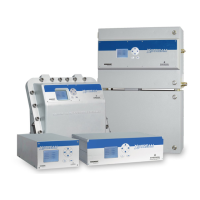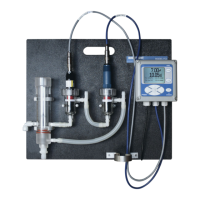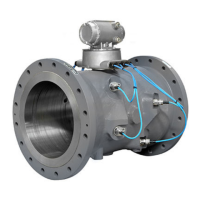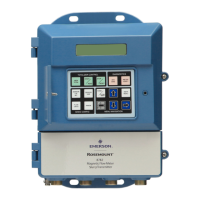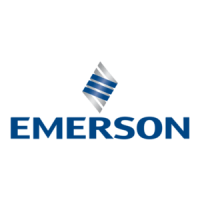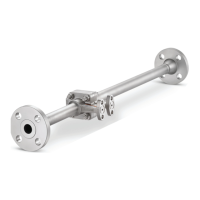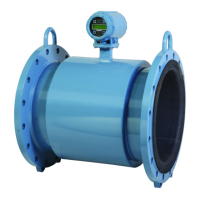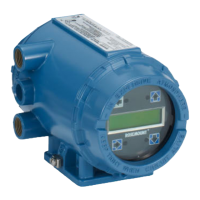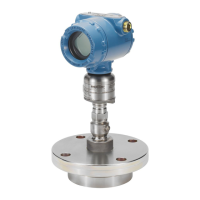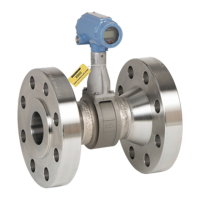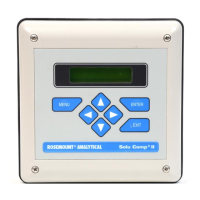
Do you have a question about the Emerson Rosemount SOLU COMP II and is the answer not in the manual?
| Accuracy | ±0.5% of reading |
|---|---|
| Enclosure | NEMA 4X, IP65 |
| Ingress Protection | IP65 |
| Measurement Principle | Conductivity |
| Temperature Range | -20 to 130°C |
| Output | 4-20 mA |
| Temperature Compensation | Automatic |
| Operating Temperature | -20 to 60 °C |
| Process Connection | 1/2" NPT |
| Material | 316 SST |
Critical guidelines for safe and proper operation of the analyzer.
Important safety alerts, including electrical shock risks and RF interference.
Steps for initial power-up, language selection, and basic settings.
Visual representation of the analyzer's menu structure for ozone measurements.
Overview of the Solu Comp II's capabilities, measurement options, and design.
Details on enclosure, dimensions, display, power, hazardous location, and agency approvals.
Detailed performance specifications for various measurement types like conductivity, pH, ORP, flow, and chlorine.
Codes for selecting power, mounting, measurements, and optional features.
Options for flexible field commissioning and measurement combinations.
List of part numbers, descriptions, and weights for mounting kits, fittings, and calibration solutions.
Steps to inspect the analyzer and its components after delivery.
Detailed instructions and diagrams for installing the analyzer in a panel cutout.
Instructions for mounting the analyzer on pipes, including diagrams and accessory kits.
Instructions for mounting the analyzer on surfaces, including hole patterns and screws.
Guidelines for preparing conduit openings and using fittings for watertight connections.
Instructions for connecting power, alarm relays, and analog outputs to the analyzer.
Wiring diagrams for connecting various sensor cables to the analyzer based on mounting type.
Description of the two-line display and the functions of the analyzer's keypad.
Step-by-step guide for assigning output values and calibrating the analyzer.
Instructions for setting security codes and using the hold function for maintenance.
Introduction to configuring outputs, alarms, input filters, temperature settings, and security.
Steps to configure current outputs (4-20mA/0-20mA) and assign measurement values.
How to assign alarms, set logic (high/low), and define setpoints and deadbands.
Adjusting the level of electronic filtering for sensor current to reduce noise.
Selecting temperature units (°C/°F) and choosing automatic or manual compensation.
Setting a security code and configuring noise rejection based on AC power frequency.
Procedures for resetting calibration and restoring factory default configurations.
Customizing the default display screen, selecting language, and adjusting screen contrast.
Overview of calibrating ozone sensors, including zeroing and full-scale calibration.
Steps to calibrate the temperature measurement using a standard thermometer.
Procedure for zeroing the sensor and performing a full-scale calibration with grab samples.
Guidelines for cleaning the analyzer and periodic calibration checks.
Exploded views and part lists for panel and pipe/surface mount enclosures.
Explanation of fault codes and initial steps for diagnosing sensor or analyzer issues.
Troubleshooting common issues without error messages, focusing on ozone readings.
Diagnosing issues like incorrect outputs, non-operating relays, or unreadable displays.
Procedures for simulating sensor inputs and temperature to test analyzer performance.
Steps for returning instruments under warranty for repair, including authorization and packaging.
Process for returning instruments for repair when the warranty has expired.
